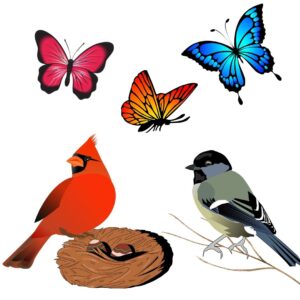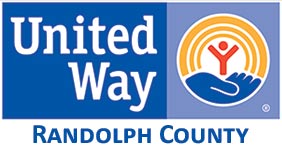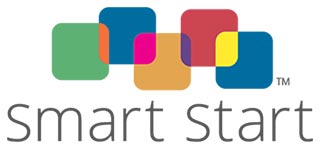 Birds and butterflies are just two of many beautiful things nature offers to EXPLORE THROUGH MOVEMENT & PLAY, but they are two of the very best things!
Birds and butterflies are just two of many beautiful things nature offers to EXPLORE THROUGH MOVEMENT & PLAY, but they are two of the very best things!
Why birds and butterflies?
- Birds have always inspired us by their songs, their ability to fly, and their seemingly infinite variety of shapes, sizes, and coloration.
- The birds you can observe in your backyard or at a nearby park, will vary with the weather, making each season feel new and different.
- Butterflies are native pollinators (along with bees). You can thank pollinators for one of every three bites of food you eat.
- Butterflies are the finished products of metamorphosis, and this presents great learning opportunities for children and adults alike.
- Birds and butterflies are commonly found in all settings, in every community!
Here are a few no-cost or low-cost fun things you can do with your children to explore birds around your home:
- Take a bird walk. Look for birds and signs of birds high and low (feathers, nests, tracks, droppings). Talk about what the colors and sounds you are seeing and hearing. Can you identify some of the birds? Can you spot a nest?
- Use toilet paper rolls to make pretend binoculars and practice observing birds.
- Talk about what makes a bird a bird. You might talk about feathers and the fact that all birds have feathers and are the only animals that do have feathers.
- Imitate the bird calls, whistles, and chirps that you hear.
- Use your arms to imitate how birds soar, flap, turn, and land.
- Conduct fly-like-a-bird relay races in your backyard.
- Once back inside, build a pretend nest out of sofa pillows or bed pillows and allow your infant, for example, to crawl through the nest. Or get your pretend nest all nice and comfy and then read together or maybe talk about all the things birds need to survive – food, water, shelter, air.
- If you’re lucky enough to find a feather, allow your child to squirt a small amount of water on the feather and see what happens. Talk about how feathers repel water! Or allow the child to paint with the feather. This indoor activity will help the children understand the texture, weight, and capacity of a feather.
- If you and your children enjoy being in the kitchen together, you can make edible bird nests:
- Melt chocolate chips
- Mix with little pretzel sticks or shredded wheat or chow mein noodles
- Shape into nests
- Add jelly beans for eggs
- In your yard, can you find a caterpillar to photograph together?
- Can you spot a butterfly pollinating a flowering plant?
- If you have a spare planter and a bag of dirt, sprinkle in some flower seeds and grow a little pollinator garden for your neighborhood Monarchs.
- Back inside, all it takes is a few sheets of construction paper to design a set of wings and then color or paint in the spots.
- Learn further about butterflies through beautifully written children’s books, including Eric Carle’s The Very Hungry Caterpillar.
Your child’s curiosity – and your own – will guide you to many other exciting explorations that will fill the season’s warm, beautiful days. Find the scientist within, and enjoy!
Here’s a great resource: Our Feathered Friends STEM Preschool Teaching Unit – www.massaudubon.org/education





